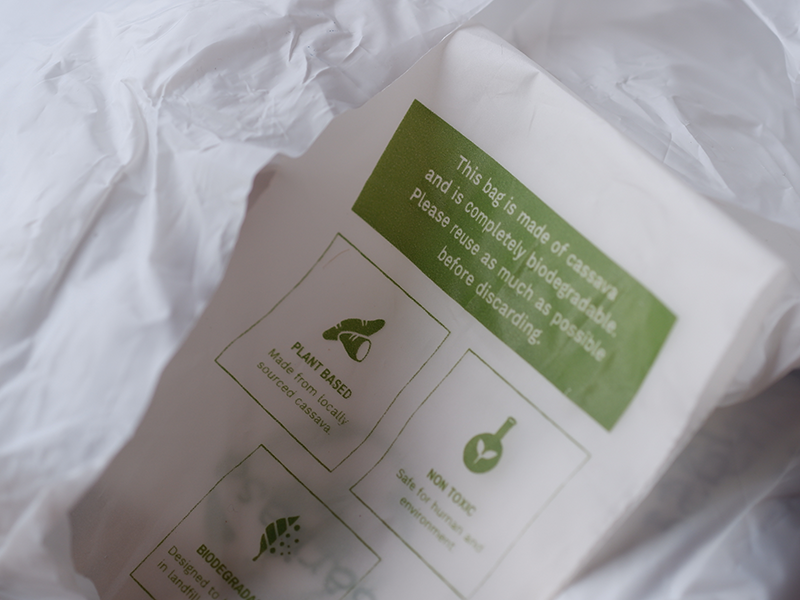Consumption of biodegradable and compostable polymers for packaging will continue growing at a faster rate than petrochemical-based thermoplastic materials, according to
new research from Smithers.
Demand is driven by the growing desire of consumers, brand owners and governments to replace single-use fossil-based plastics with more sustainable packaging alternatives. We caught up with David Platt, author of
The Future of Biodegradable and Compostable Packaging to 2029, to discuss the key trends and opportunities in this sector.
Q. What are the key trends and how are they impacting the market for biodegradable and compostable packaging?
The global biodegradable and compostable packaging market is forecast to grow through to 2029 at more than twice the rate of growth for the packaging market as a whole.
Demand is driven by the growing desire of consumers, brand owners and governments to replace single-use, fossil-based plastics with materials that do not contribute to plastic waste or landfill volumes.
Biodegradable and compostable consumption growth will also be fuelled by a rapid rise in production capacity. The production capacity share for biodegradable and compostable polymers is set to rise at a faster rate than non-biodegradable, bio-based polymers through to 2029.
On the downside, many brand owners and converters are becoming more sceptical about the true value of biodegradable and compostable packaging. There is growing concern that these materials do not fully contribute to a ‘circular economy’ given the lack of a separate industrial composting infrastructure for compostable packaging in most countries at end-of-life. Most commonly, biodegradable and compostable packaging is either sent to landfill or it is incinerated.
Q: What are the technical innovations expected in this sphere?
Product development and innovation is driving growth across all biodegradable and compostable packaging product types.
For thermoplastic starch and starch blends, product developments include the introduction of starch blends for extrusion coating and lamination, the development of a degradable bioplastic film with tapioca starch, and a technology that creates 100% bio-based plastics from renewable sources of carbohydrates.
In the polylactic acid (PLA) sector, work is being undertaken to make PLA much more degradable in a shorter period of time by adding plasticizers and other additives or blending PLA with more hydrophilic polymers. Plastics and additive manufacturers are also examining ways to improve the mechanical properties of PLA, which in its natural state can lack melt strength, impact strength, barrier strength and heat resistance. Scientists have now coupled plasticizers directly with the PLA polymer chain to make the material more flexible over the longer term. A family of recycled PLA grades produced from chemically recycled feedstock has now also been launched.
Q: What are the impact of regulations on this market?
There are bans on plastic bags in several EU countries, China and some US states. By 2030 the Packaging and Packaging Waste Regulations (PPWR) will ban single-use plastic bags in all EU states. Furthermore, industry standards, regulatory, certification and labelling systems designed to encourage biodegradable polymer market development have been established in all major world regions.
However, regulatory support for biodegradable and compostable packaging is rather limited in Europe and North America. While the PPWR in Europe gives some space for compostable plastics, recycling, and to a lesser extent, reuse, are the preferred options for recovery of post-consumer plastic packaging waste, rather than biodegradable and compostable packaging. The EU’s Single-use Plastics Directive makes no specific differentiation between petroleum and bio-derived polymers.
Biodegradable and compostable packaging is also under threat from the growing availability of competitively priced and higher quality recycled plastics. Brand owners are using higher volumes of recycled plastics such as PET to meet their sustainable packaging and regulatory goals, sometimes at the expense of bioplastics.
Q: What area is growing the most in this industry?
PHA is forecast to grow consumption at the fastest rate, followed by PLA. PHA market growth is driven by a large build-up in production capacity and new product development. PLA consumption will be driven primarily by an expansion in production capacity by existing producers, new market entrants and product innovation and development.
In terms of end-use markets, non-food is the largest market, accounting for 57.5% of global consumption in 2023. Beverage bottles account for a very small fraction of biodegradable and compostable packaging demand at present. However, the beverages sector is forecast to grow at the fastest rate, from a very low base level. Coffee capsules and caps and closures are forecast to grow at rapid rates, particularly in Europe and North America.
Q: What will be the key challenges to 2029?
The high relative cost compared with petrochemical-based thermoplastics remains one of the most important reasons for the relatively slow adoption of biodegradable and compostable packaging.
From a material perspective, most biodegradable and compostable polymers cannot compete in the market with commodity plastics in terms of performance and durability. While it is necessary to lower the cost of bioplastics, they must also provide superior barrier and mechanical properties if intended to function as food packaging materials.
The absence of worldwide facilities and infrastructures for their recycling and/or composting makes it extremely difficult to enable a truly circular economy. Customers need clarification about how to dispose of the biodegradable and compostable packaging after use.
